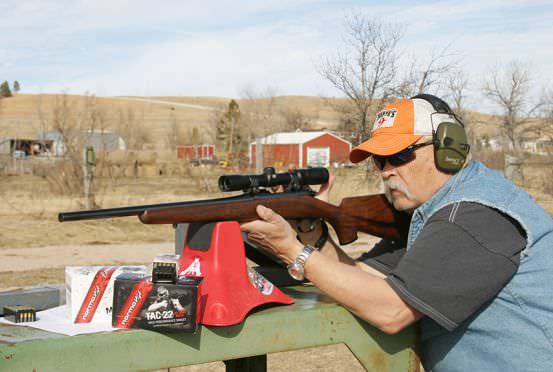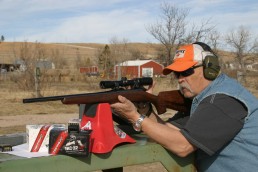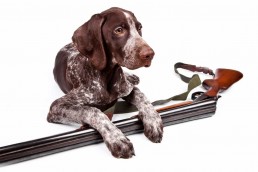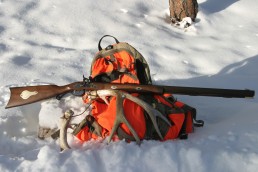Norma Ammunition: .22 Long Rifle Performance Review
SHARE THIS POST
With empty store shelves, long lines when the product supply truck shows up and big box store parking lot scalpers working overtime, the folks at Norma Ammunition decided it was time to get into the rimfire cartridge business.
I have shot, tested and built much of my shooting needs around Norma Ammunition for almost 60 years. When WWII ended and some better-grade Jap 7.7 came across the ocean along with a massive number of small and large ring 7mm and 8mm Mausers, the hunt was on for descent-shooting, soft-nose sporting ammunition. Norma answered the call even back then, providing returning American soldiers with loads to harvest deer and other larger game in civilian life.

Since that time, Norma has always been associated with ammunition that fits many needs, and is also well above some standards regarding production quality. The assignment here was to retain some of this new rimfire ammunition and head for the range to determine just how good the new product was in terms of accuracy, function and other related elements regarding cartridge behavior.
Testing was based on ample amounts of the Norma 40-grain Match cartridges and their TAC cartridge brand of .22 Long Rifle. The difference in the two cartridges is not obvious, and if mixed into a pile you would have a tough time seeing the difference between target fodder from the plinking loads.
The brass-cased black lead bullets retain some of a wet-wax look (lubricated), and in general don’t retain any distinctive markings. In fact, the cartridges look very generic and simple by comparison to some of the American art departments marketing high-glitz brand boxes and bullet designs.
With a muzzle velocity of 1,200 fps, and regarding both loads, what I expected as a difference in these cartridges boiled down to component-grade elements when loaded by Norma. Even before firing the first round downrange, I fully expected the “MATCH” ammunition to have a better performance standard than the “TAC” plinking loads.
By way of my Colt Huntsman 3 1/2-inch barrel, I started my test shooting on paper targets at 30 feet. First load up was the TAC .22 LR, and with a 10-round mag charged, I chambered a round number one that was subsequently sent downrange. Shooting a 10-shot, slow-fire group off a simple Case-Gard pistol/rifle rest, the measured results indicated that I had produced a 2.430 group that was not at all considered target-performance quality. However, on the other hand, I was not shooting a target handgun either, but rather a snake and barn rat-killer I had carried for a very long time afield. Sending several more loaded magazines of the Norma product downrange indicates that my little Colt liked the ammunition to the point that after 50 rounds were expended, I had experienced no jamming or other functional problems. Accuracy against some water-filled milk jugs and tin cans tended to hold to about the same standard as the first measured group.
Moving to my 40-X Remington custom-built rimfire rifle, the TAC ammunition tightened up massively on paper targets set at 25 yards. My 40-X is not user-friendly in terms of her likes and dislikes of varied brands of rimfire ammunition. However, the rifle took to the Norma .22 LR cartridges without a single hitch. Shooting a five-round group for accuracy resulted in a 1-inch measured cluster of impact points—again, not winning accuracy, but well within the limits of the intended general-purpose ammunition.
With a change to the Norma MATCH .22 LR loads, there was once again a shift in the ammunitions’
downrange performance. Shooting a 10-shot group by way of my Colt auto resulted in shaving some measurement point off the calipers. A group size measuring 1.086 pushed the limits of the new fodder closer to target-handgun accuracy. However, when I moved to the 40-X, the rifle drilled a three round .615-inch hole in the paper, followed by an eight round group measuring .810 inch. This ammunition was different, and it was heading straight into the world of target-grade ammo.
Are you enjoying this post?
You can be among the first to get the latest info on where to go, what to use and how to use it!
Chronograph review told the tale
While the rifle and handgun testing went well, in my mind the real test of the cartridges would fall to the measured velocity recorded by Doc Oehler’s Chronotech Model 33 velocity recording system. With screen space at 3 feet, the lower-velocity .22 LR ammunition, and again, using the Case-Gard mini quick rest, I proceeded to run rounds across the photocell screens, thereby sending hard data to the computer sitting a few feet away from the live-fire event.
Shooting the TAC loads first, the ballistic computer registered a series of loads as illustrated below:
Table A illustrates the TAC .22-LR ammunition was running a little wild, but would have tightened up a good deal if that single, very low “993 fps round” had not been recorded. This also gives the series in terms of standard deviation a rather high radical number of 31.The higher the number, the less uniform the load series. As you will soon see, the testing over the chronograph screens of the MATCH loads showed something quite different in terms of performance.
From fast to slow bullets, Table B showed the difference was 12 fps, recording an SD of only 06. That’s tight my friends, and very effective loading of the long-rifle cartridge, as applied to match shooting requirements. If the modern chronograph system has done anything for the outside industry researcher or hunter, it is that it has made the industry dead on honest about what they load, comment on and market to the shooting public. Norma .22 LR ammunition is noting less than top grade, as illustrated by these totally factual numbers.
Table A
Norma TAC .22-LR
- 1,009 fps
- 1,001 fps
- 1,027 fps
- 993 fps
- 1,062 fps, ES-69 fps
SD 31
Table B
Norma MATCH .22-LR
- 1,067 fps
- 1,069 fps
- 1,072 fps
- 1,068 fps
- 5.1,077 fps ES-12 fps
SD 06
L.P. Brezny has worked in research and development across the shooting industry for 37 years. He has developed and marketed systems for 12 gauges, designed ammunition for Winchester and Federal Cartridge, designed separator quiet slugs, shotshells and one-choke do-it-all systems. Brezny was the first ballistics writer to measure shotgun pellets in flight to ranges as great as 100 yards. He has published three books on shooting (Gun Digest Books), and is completing a fourth on long-range rifle applications. He has published hundreds of articles on sending rounds downrange.
MWO
SHARE THIS POST
Did you enjoy this post?
You can be among the first to get the latest info on where to go, what to use and how to use it!
L.P. Brezny
Writing on outdoor subjects for over 40 years, L.P. Brezny has written four books on shotgun and rifle (ballistics and performance). He’s an expert at smoothbore, and high-power, ultra-long-range shooting. He’s a specialist, producing reviews covering general products used in the outdoors industry.



